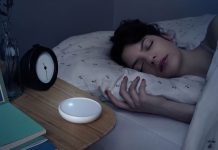In-home product testing is a type of market research in which participants are given a product to use in their own homes for a period of time and then asked to provide feedback on the product’s performance, usability, and overall satisfaction. This type of testing can provide a wealth of benefits for companies looking to improve their products and gain a better understanding of their target market.
Table of Contents
Realistic Feedback
One of the main benefits of in home product testing is that it provides more realistic feedback than traditional focus group testing. When participants use a product in their own homes, they are able to give more accurate and detailed feedback on how the product is actually used in real-world scenarios. This can be particularly useful for companies developing consumer products, as it allows them to gain insight into how the product will be used in a variety of different settings.
Leads to Better Designed Products
Another benefit of in-home product testing is that it can lead to better-designed products. By gathering feedback from real users in real-world environments, companies are able to identify areas where a product needs improvement and make changes accordingly. This can help ensure that a product meets the needs and expectations of its target market, ultimately leading to greater customer satisfaction and sales.
Faster Than Traditional Methods
In-home product testing is generally faster than traditional methods, such as focus group testing, for several reasons. First, in-home testing eliminates the need for participants to travel to a research facility, which can save time and money. Additionally, in-home testing allows for a more flexible testing schedule, as participants can provide feedback on their own time and at their own pace.
Furthermore, in-home testing typically requires fewer participants than traditional methods, which can also save time and resources. Additionally, with modern technologies, companies can use online surveys, mobile apps and other tools to gather data in real-time, which can be faster than traditional methods.
Cost Effective
In-home product testing can also be a cost-effective way to gather market research data. Traditional focus group testing can be expensive and time-consuming, as it requires participants to travel to a research facility and participate in a group setting. With in-home product testing, participants can provide feedback from the comfort of their own homes, making it a more convenient and cost-effective option for companies.
Accurate and Efficient
Technology has also played a big role in making in-home product testing more accurate and efficient. Advancements in technology have made it easier to conduct in-home product testing and to gather more accurate data. For example, virtual reality testing can simulate the in-home experience and can provide a more realistic testing environment. Additionally, the use of mobile apps, webcams, and other technologies can make it easier for participants to provide feedback and for companies to gather data.
Ensures Customer Satisfaction
In-home product testing can also have a significant impact on the product development process. By gathering feedback from real users, companies can identify areas where a product needs improvement and make changes accordingly. This can help ensure that a product meets the needs and expectations of its target market, ultimately leading to greater customer satisfaction and sales.
Helps With Product Launch Process
Finally, in-home product testing can play an important role in the product launch process. By testing a product in real-world environments, companies can gain a better understanding of how the product will perform once it hits the market. This can help identify any potential issues or challenges that may arise, allowing companies to make adjustments before the product is released.
Conclusion
In-home product testing is a valuable tool for companies looking to improve their products and gain a better understanding of their target market. There are many benefits of in-home testing over traditional product testing methods. Furthermore, in-home product testing plays an important role in the product launch process by identifying any potential issues or challenges before the product is released. Overall, in-home product testing is a valuable market research method that can help companies improve their products and ensure customer satisfaction.








